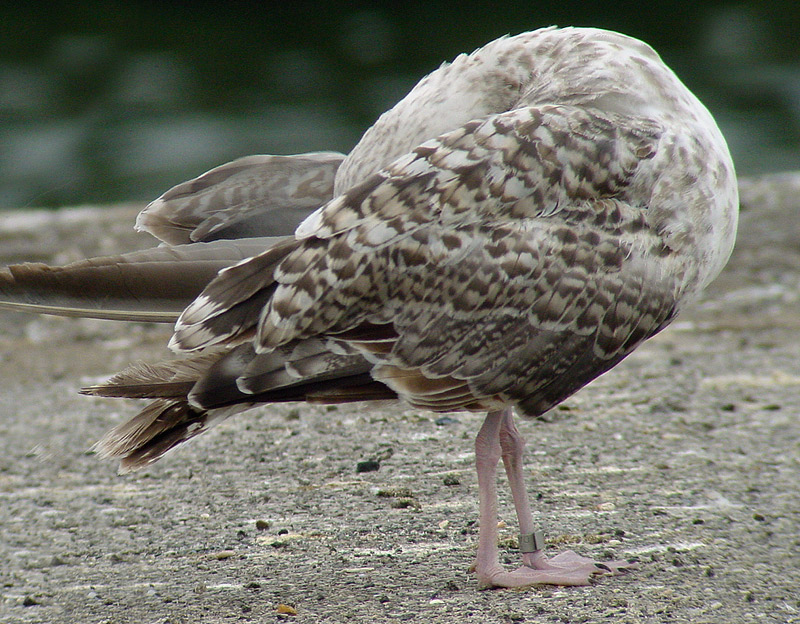 Herring Gull- Zilvermeeuw (argentatus & argenteus)
Herring Gull- Zilvermeeuw (argentatus & argenteus)
(last update:
Herring Gull plumages:
hg 1cy July
hg 1cy August
hg 1cy September
hg 1cy October
hg 1cy November
hg 1cy December
hg 2cy January
hg 2cy February
hg 2cy March
hg 2cy April
hg 2cy May
hg 2cy June
hg 2cy July
hg 2cy August
hg 2cy September
hg 2cy October
hg 2cy November
hg 2cy December
hg 3cy January
hg 3cy February
hg 3cy March
hg 3cy April
hg 3cy May
hg 3cy June
hg 3cy July
hg 3cy August
hg 3cy September
hg 3cy October
hg 3cy November
hg 3cy December
hg sub-ad January
hg sub-ad February
hg sub-ad March
hg sub-ad April
hg sub-ad May
hg sub-ad June
hg sub-ad July
hg sub-ad August
hg sub-ad September
hg sub-ad October
hg sub-ad November
hg sub-ad December
hg ad January
hg ad February
hg ad March
hg ad April
hg ad May
hg ad June
hg ad July
hg ad August
hg ad September
hg ad October
hg ad November
hg ad December
|
(8 images) Herring Gull DA 2129502cy (argenteus), April 20 2002, Boulogne-sur-Mer, France (50.42N,01.34E). A ringed 2cy bird seen in April, June and July; ringed with a French ring: Museum Paris DA 212950. It was ringed as 1cy on November 20 2001 at Wimereux (50.46N, 01.36E), only 6 km north of Boulogne. This bird was registered 'Yellow-legged Gull, L. cachinnans' by the ringer, which it may well be; but we believe some characteristics might point to argenteus. At first impression DA 212950 is surprisingly reminiscent of 2cy of the michahellis taxon (see the third April image!!!), and for two months, there were strong indications for both argenteus and michahellis, with a slight bias to argenteus. For comparison a few other Paris-ringed birds are added on this website: Although these above mentioned characteristics may point to argenteus, other points strongly advocate michahellis. The tertials are extensively dark-based, and together with the primaries are the darkest feathers on the bird. The tail-feathers show a wedge-shaped tail-band, contrasting with the vermiculated base of the rectrices and the almost completely white upper-tail coverts. One of the strongest points for michahellis are the second generation wing-coverts which were included in the post-juvenile moult. About ten second generation coverts can be found in the lesser coverts. British, Dutch and Belgium argenteus normally show a complete juvenile wing-covert panel throughout spring, until May. About 50% of the upper scapulars have been replaced for third generation feathers, strongly resembling second generation scapulars in their pattern. Four lower scapulars have been moulted as well.
3 images above: DA 212950, April 20 2002, Boulogne-sur-Mer, France (50.42N,01.34E). 3 images below: DA 212950, June 13 & 14 2002, Boulogne-sur-Mer, France (50.42N,01.34E). The same bird Paris DA 212950 is depicted below. By June, the plumage looks completely different with almost all the scapulars moulted to third generation feathers, showing a bold pattern of black bars on a buffish-brown base. When you compare the left wing of this bird in the April and June pictures, it shows that the lesser coverts which were included in the post-juvenile moult are left out of this spring moult, while adjacent feathers are freshly replaced second generation lesser coverts. These earlier moulted second generation coverts are shed by July. The tail is still completely juvenile and the primary moult arrived at P6 with P7 still juvenile and P4 fully grown.
2 images below: DA 212950, July 10 2002, Boulogne-sur-Mer, France (50.42N,01.34E). Again, DA 212950 still present in July. By July the tail-feathers are moulted with only the juvenile R6 present (outermost tail-feather). All other rectrices have been shed and are growing, not visible yet. Primary moult arrived at P6 which is fully grown, while P9-P10 are still juvenile.
|
 April 20 2002
April 20 2002 April 20 2002
April 20 2002 April 20 2002
April 20 2002 June 13 2002
June 13 2002 June 13 2002
June 13 2002 June 14 2002
June 14 2002 June 14 2002
June 14 2002 July 10 2002
July 10 2002 July 10 2002
July 10 2002